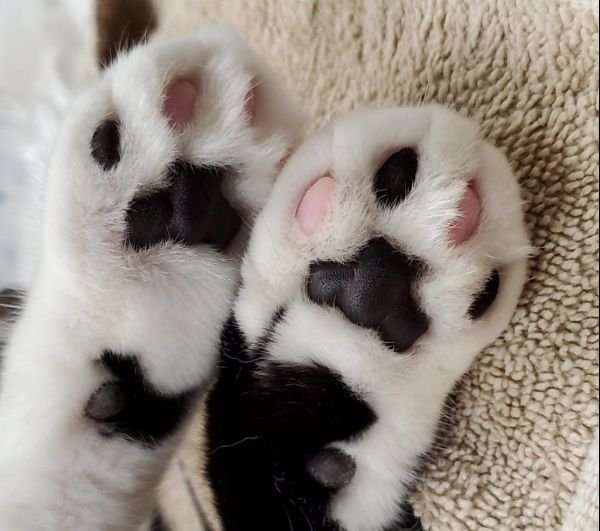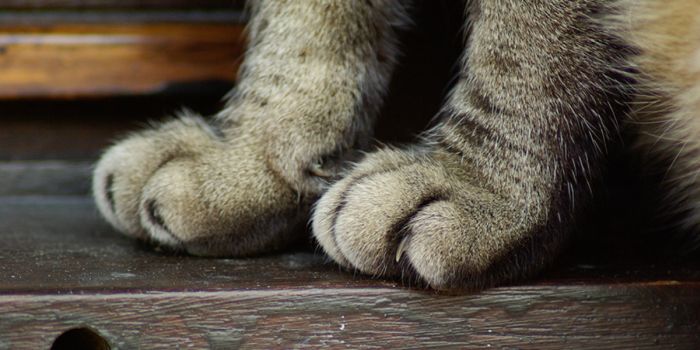
Declawing cats is common but controversial. Declawing, or
onychectomy, is a major surgical procedure that removes an animal’s claws completely by amputating the tips of its toes. Due to the severity of the practice, it has been considered illegal in certain countries.
Cats can develop biting aggression and litterbox issues when they are declawed. They also don’t have any way to protect themselves outdoors.
However, proponents believe that if performed properly, declawing a cat is actually a safe procedure that is no more dangerous than spaying/neutering. It is also supposed to improve the relationship between cats and owners, as proven in a study conducted back in 1991.
Many of the perceived benefits of declawing can be achieved through alternatives. Be sure to investigate all options before having your cat declawed.
The Rates
A veterinarian might require that you try other solutions to scratching before they are willing to declaw your cat. Alternatives to declawing usually cost under $60 and may even be free. These can certainly be a cost-effective method of preventing scratching.
Altogether, the cost to declaw a cat is $200 to $800. This cost includes any take-home medications and pre-anesthetic health checks.
The largest variable for this price is the age of your cat and your local market. Older cats will need more diagnostics to make sure that they are healthy enough for anesthesia.
For example, Radbill Animal Hospital in Pennsylvania administers declaw services for $455 for the front paws. While it is not necessary to have all four paws declawed, it still does offer it for $680.
This declawing cats cost is inclusive of a physical exam on the day of the surgery, the actual surgery, the overnight stay, a 5-lb. bag of cat litter, pain medication (during surgery and post-op), and antibiotic pills.
Some veterinarians won’t declaw cats at all. Many areas are even outlawing declawing cats.
If you are determined to have your cat declawed, you may have to travel outside of your area to have the procedure done. This will, of course, be an additional cost.
Cat Declawing Cost Breakdown
- Pre-Anesthetic Health Checks
Depending on your cat’s age, it may need diagnostic testing before it can go under anesthesia. Young adult cats will likely require a CBC and basic blood chemistry panel, which has a cost of about $80 to $120.
Older cats, on the other hand, typically need a more extensive chemistry panel, a CBC, and a urinalysis, which cost roughly $175 to $250.
The morning before the procedure, an exam will also be performed to make sure your cat is feeling well enough for the anesthesia. This costs about $30 to $50.
- Anesthesia
Declawing typically does not need intubation and gas anesthesia – only an injectable form. This makes the anesthesia more simple and thus less costly.
The price for anesthesia will normally range from $25 to $75.
- Procedure
A technician will shave and sterile scrub your cat’s paws as best possible. Due to the nature of the area, the procedure is not sterile. Once the area is ready, the doctor will go ahead and remove the claws.
There are two methods to declaw a cat. In one method, the veterinarian will use a scalpel to cut the joint and remove the first bone of each toe. In another method, the veterinarian will use a trimming tool to cut through half of the first bone of the toe.
Veterinarians charge roughly $400 an hour for their time in surgery. After going under anesthesia and preparing the feet, the declawing process takes roughly 30 minutes.
With either method, tissue glue and bandages will be used to stop the bleeding and cover the wound. These bandages must stay on overnight. Proper bandaging is quite complicated and can cost $20 to $50.
- After Care
Your cat will go home with antibiotics and pain medication for its declaw procedure.
Antibiotics are generally affordable and should cost under $30. Some veterinarians prefer a long-acting injectable antibiotic, which can cost up to $60.
Most veterinarians will send home an anti-inflammatory pain medication which should cost $20 to $30.
They will also send home stronger pain medications. These will cost in the $40 to $80 range, depending on your cat’s size.
Your cat will also need to wear an e-collar to make sure it does not chew on its paws. This costs $10 to $25.
Unlike Wolverine, cats do not have the ability to recover quickly after surgery. It will usually take a week or two before they completely heal and there are a few things you can do to help.
Replace your regular cat litter to paper cat litter for 1 week following the surgery to avoid contaminating the surgical wounds. A 30-lb. bag of paper cat litter costs $20. Alternatively, you can use shredded office paper, which is often available for free.
Cats are known to be good at hiding their pain, so make it a point to give them the medications prescribed by the vet even though they seem to act normal.

Other Considerations
The best time to get your cat declawed is while it’s still young (around 3-6 months). Since kittens’ bones are so much softer at this stage, the procedure would more likely go smoother compared to that of an adult cat’s.
Kittens would also tend to recover faster and adjust to the change better than adults would.
Owning a declawed cat will have some special considerations. Some declawed cats live a perfectly happy life while others run into issues.
Declawed cats cannot protect themselves if they are outside. If they ever get lost, it is unlikely they will survive long enough to be found.
These cats are also known to become sensitive to walking on kitty litter. A large percent of declawed cats refuse to use their litter box later in life. This can potentially cause more damage to the home than scratching furniture.
Some cats that don’t have claws feel the need to bite instead. They may bite children or their owners when before, they would have scratched.
Cat Declawing Alternatives
There are many ways to prevent inappropriate scratching in cats. This can save significant money on cat declawing costs.
Most solutions are under $30 and can be highly effective.
- Regular Nail Trims
Cats can have their nails trimmed on a regular basis. This can be done with a pet nail clipper (about $5 to buy) or even with a regular human nail clipper.
If this is done every 1-2 weeks, your cat’s nails will not become sharp.
Nail trims at a groomer or veterinary clinic cost anywhere from $10 to $30. The cost may be higher if your cat behaves poorly at the veterinarian or groomer.
Many times a groomer or veterinary technician can teach you how to trim nails at home. This is the easiest and most cost-effective way to prevent your cat from scratching.
- Soft Paws
One popular alternative to declawing is Soft Paws.
These are soft plastic tips which can be glued to the nails of your cat. They cost roughly $10 for 40 nail tips.
As the nails grow over the next few weeks, the plastic tip will fall off and need to be replaced.
Soft Paws can be applied at home or at your local veterinary clinic. The charge for applying these nail caps is anywhere from $15 to $60.
Many times, the technician can apply soft paws and teach you how to do it too. The process is relatively easy.
First, you trim the nails and then glue on the Soft Paws. The glue dries almost immediately.
- Preventing Scratching the Wrong Place
When cats scratch, it not only sharpens their nails but it leaves a pheromone scent behind. Humans can’t smell it but it tells cats to “scratch here.”
If your cat scratches anywhere they shouldn’t, be sure to wash the surface with warm soapy water to remove this sent. You can also apply double-sided tape to the area to prevent further scratching.
Remember that cats need to scratch. Be sure to give them a scratching post.
Cats can be particular with the texture of their scratching surface. They may also have a preference for vertical or horizontal scratching.
Take note of what your cat likes to scratch and buy something similar. Keep in mind that the location of the scratching post may be important to your cat too.
A scratching post can run from $5 to $40. Try to buy the cheapest post possible until you find a type your cat likes.
Cardboard scratching surfaces are a good place to start. If this doesn’t work, you can move on to twine, wicker or carpet scratching posts.
- Feliscratch
Cats use pheromones to communicate where to scratch. It only makes sense for humans to use these pheromones to communicate with them.
Feliscratch is a month-long course of these pheromones that teaches your cat where to scratch. The cost is around $15 to $25. Eight out of ten cats will learn to scratch in the right place when using this product.

ZOEY MY CAT NEEDS TO BE DECLAWED AND IM LOOKING FOR LOW COST PLEASE
Did you find a vet to declaw your cat? How was the aftermath of the declawing? Is it still working, etc?